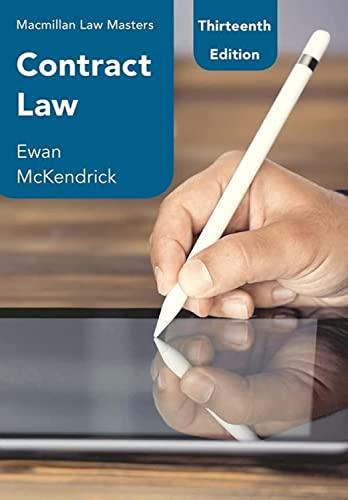Question
The record reveals the following factual and procedural history. The defendants operate a facility in Middlefield, known as Powder Ridge, at which the public, in
The record reveals the following factual and procedural history. The defendants operate a facility in Middlefield, known as Powder Ridge, at which the public, in exchange for a fee, is invited to ski, snowboard and snowtube. On February 16, 2003, the plaintiff brought his three children and another child to Powder Ridge to snowtube. Neither the plaintiff nor the four children had ever snowtubed at Powder Ridge, but the snowtubing run was open to the public generally, regardless of prior snowtubing experience, with the restriction that only persons at least six years old or forty-four inches tall were eligible to participate. Further, in order to snowtube at Powder Ridge, patrons were required to sign a "Waiver, Defense, Indemnity and Hold Harmless Agreement, and Release of Liability" (agreement). The plaintiff read and signed the agreement on behalf of himself and the four children. While snowtubing, the plaintiff's right foot became caught between his snowtube and the man-made bank of the snowtubing run, resulting in serious injuries that required multiple surgeries to repair.
Thereafter, the plaintiff filed the present negligence action against the defendants. Specifically, the plaintiff alleges that the defendants negligently caused his injuries by: (1) permitting the plaintiff "to ride in a snow tube that was not of sufficient size to ensure his safety while on the snow tubing run"; (2) "fail[ing] to properly train, supervise, control or otherwise instruct the operators of the snow tubing run in the proper way to run the snow tubing course to ensure the safety of the patrons, such as the plaintiff"; (3) "fail[ing] to properly groom the snow tubing run so as to direct patrons. . . such as the plaintiff away from the sidewalls of [the] run"; (4) "plac[ing] carpet at the end of the snow tubing run which had the tendency to cause the snow tubes to come to an abrupt halt, spin or otherwise change direction"; (5) "fail[ing] to properly landscape the snow tubing run so as to provide an adequate up slope at the end of the run to properly and safely slow snow tubing patrons such as the plaintiff"; (6) "fail[ing] to place warning signs on said snow tubing run to warn patrons such as the plaintiff of the danger of colliding with the side wall of [the] snow tubing run"; and (7) "fail[ing] to place hay bales or other similar materials on the sides of the snow tubing run in order to direct patrons such as the plaintiff away from the sidewalls of [the] run."
The defendants, in their answer to the complaint, denied the plaintiff's allegations of negligence and asserted two special defenses. Specifically, the defendants alleged that the plaintiff's injuries were caused by his own negligence and that the agreement relieved the defendants of liability, "even if the accident was due to the negligence of the defendants." Thereafter, the defendants moved for summary judgment, claiming that the agreement barred the plaintiff's negligence claim as a matter of law. The trial court agreed and rendered summary judgment in favor of the defendants. Specifically, the trial court determined that the plaintiff, by signing the agreement, unambiguously had released the defendants from liability for their allegedly negligent conduct.
The plaintiff now claims on appeal that the agreement is unenforceable because it violates public policy. Specifically, the plaintiff contends that a recreational operator cannot, consistent with public policy, release itself from liability for its own negligent conduct where, as in the present case, the operator offers its services to the public generally, for a fee, and requires patrons to sign a standardized exculpatory agreement as a condition of participation.
Armed with your newly minted degree from St. Leo, you are miraculously appointed an appellate judge in Connecticut.Please write the opinion of the court.Specifically, address whether the "Waiver, Defense, Indemnity and Hold Harmless Agreement, and Release of Liability" (agreement) is a valid contract which should be enforced.
Step by Step Solution
There are 3 Steps involved in it
Step: 1

Get Instant Access to Expert-Tailored Solutions
See step-by-step solutions with expert insights and AI powered tools for academic success
Step: 2

Step: 3

Ace Your Homework with AI
Get the answers you need in no time with our AI-driven, step-by-step assistance
Get Started


